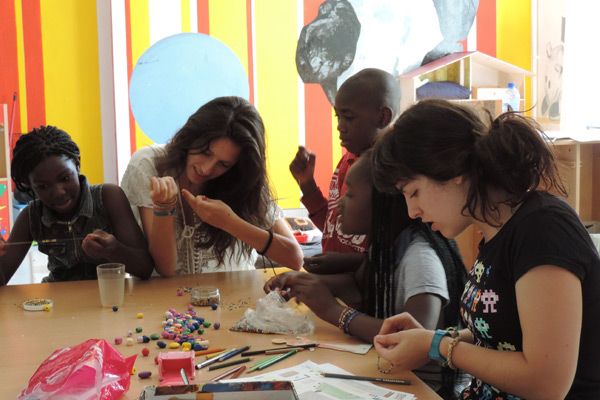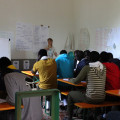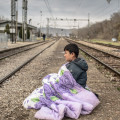Fedasil Reception House in Rixensart (Belgium): A history of integration

Local volunteers play with the children hosted in the Fedasil facility in Rixensart. Credit: Fedasil
Rixensart is a small town of around 20,000 inhabitants in the prosperous Belgian province of Walloon Brabant. The town hosts one of the seventeen Refugees’ Reception Houses managed by Fedasil (the Belgian National Agency for Asylum Seekers), which currently represents a shelter for around 100 migrants coming from very different areas of the world.
We have discussed the functioning of the Center with Florence Burhin, the social worker who has been managing the facility over the last few years, and her assistant Henryk Chofracki. As with many other Refugees’ Reception Houses in Belgium, the Rixensart’s Center does not only host asylum seekers but also illegal migrants. Indeed, Belgium allows asylum seekers who have been denied the asylum status to keep living in reception facilities for some time, especially in cases of families with minors, in order to allow them to restart the asylum application procedure or get ready for voluntary repatriation to their home countries.
“Rixensart has a very unique specialization”, explains Mme. Burhin, “it hosts many girls who are less than eighteen years old and have babies”. Minor girls and mothers, mostly coming from Congo and victims of sexual abuse or forced marriages, undeniably constitute a quite sensitive category. Children and babies represent an important part of this small community: every afternoon, volunteers spend hours with them to help with homework and recreational activities.
The Belgian asylum system pays great attention to the wellbeing of minors, paying particular attention to education. Asylum seeker children start to go to school as soon as their parents begin the asylum application procedure: special classes, called “gangway classes” (classes passerelles, in French), have been designed to allow kids coming from different cultures, levels of education and languages to catch up with their Belgian peers in order to be later introduced into normal classes.
In fact, schooling represents just one of the several elements of integration between the asylum seekers hosted in the Center and the local community of Rixensart. As Mme. Burhin tells us, “when the Center was created, the local community was not happy about it – people feared the amount of robberies would grow…” But that did not happen: rather, a small group of locals started offering to help as volunteers in the Center for the most diverse activities: French language classes, sewing classes, children after-school activities, etc. “The village decided to open itself up to the hosts of the Center and we decided to fully open the Center to the locals”, explains Mme. Burhin warmly. A fruitful mix of voluntary work and State-funded refugees’ reception facilities brought into existence a fully functioning integrated system to welcome and integrate asylum seekers within the local community.
When asked about the reasons for such success, Mme. Burhin and Mr. Chofracki did not hide the fact that the wealth of the area and the limited number of asylum seekers hosted in the Center played a major role in developing this practice of integration.
Could the experience of Rixensart be implemented elsewhere, then, where communities might not be so rich and open and where the influx of refugees is much higher?



